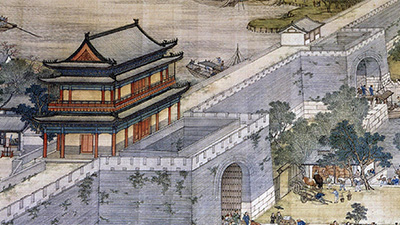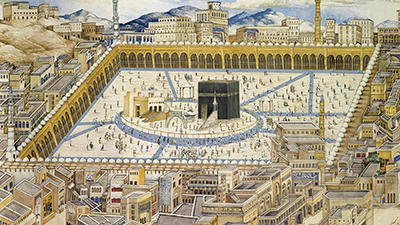Introducing Afro-Eurasia
Teacher Resources
Driving Question: How did governments and religions work together to organize communities during this period?
From East Asia to Western Europe, from Siberia to South Africa, Afro-Eurasia’s diverse landscapes, climates, and peoples have shaped the course of world history. In this lesson, you’ll explore the communities of Afro-Eurasia and the different ways in which they structured their states and religions.
Learning Objectives:
- Evaluate how communities were organized in Afro-Eurasia.
- Assess the role of religion in the governance of states in Afro-Eurasia.
- Use the historical thinking practice of claim testing to identify, assess, and use authority when evaluating and making claims.
Vocab Terms:
- authority
- belief system
- claim tester
- culture
- dynasty
- empire
- hierarchy
Opener: Introducing Afro-Eurasia
To teach this lesson step, refer to page 2 of the Lesson 2.2 Teaching Guide.
Would you ask your dentist for advice on fixing a hole in your jeans? Probably not. We trust different authorities in different situations.
Reviewing Authority
To teach this lesson step, refer to page 3 of the Lesson 2.2 Teaching Guide.
Want to reinforce claim testing in your classroom? Hang these posters in your classroom!
It’s not always easy to decide between conflicting claims from two people with strong credentials. In a battle of PhD vs. PhD, who wins?
Exploring Afro-Eurasia
To teach this lesson step, refer to page 4 of the Lesson 2.2 Teaching Guide.
Want to make sure this activity works for all your students? Check out our Differentiation Guide.
A diverse tapestry of different communities stretched across Afro-Eurasia in the thirteenth century. Explore the articles below to compare how they were organized and the role of religion in their government structures.
-
Guiding Questions
-
Before you read
Preview the questions below, and then skim the article. Be sure to look at the section headings and any images.
While you read
Look for answers to these questions:
- Why do we need rules and institutions to organize large groups of people?
- How does the author define a state?
- What is Dar al-Islam, and what was its significance during this period?
- What was the largest and most sophisticated state at the start of this era? What strategies made this state so powerful?
- What innovations did the Mongol Empire produce? How did the empire shape the future of Eurasia?
After you read
Respond to this question: Thinking about the three frames of this course, why do you think most large states in Afro-Eurasia clustered along a belt of land?
-
Guiding Questions
-
Before you read
Preview the questions below, and then skim the article. Be sure to look at the section headings and any images.
While you read
Look for answers to these questions:
- How does the author describe states and religion in the Islamic world?
- How were Buddhism and Hinduism different?
- Why did Buddhism and Daoism often prove troublesome for the Chinese state? What did the Song dynasty promote instead and why?
- What are some ways that rulers and religious leaders cooperated and clashed in Christian Europe?
- The Mongol Empire conquered people of many different religions across Eurasia. How did the Mongol state treat these conquered peoples?
After you read
Respond to this question: Can you think of any ways that the history covered this article might have influenced the ways we think of religion in the twenty-first century?
Closer: Introducing Afro-Eurasia
To teach this lesson step, refer to page 7 of the Lesson 2.2 Teaching Guide.
Sometimes less is more. How can you quickly summarize what you’ve learned in this lesson?





